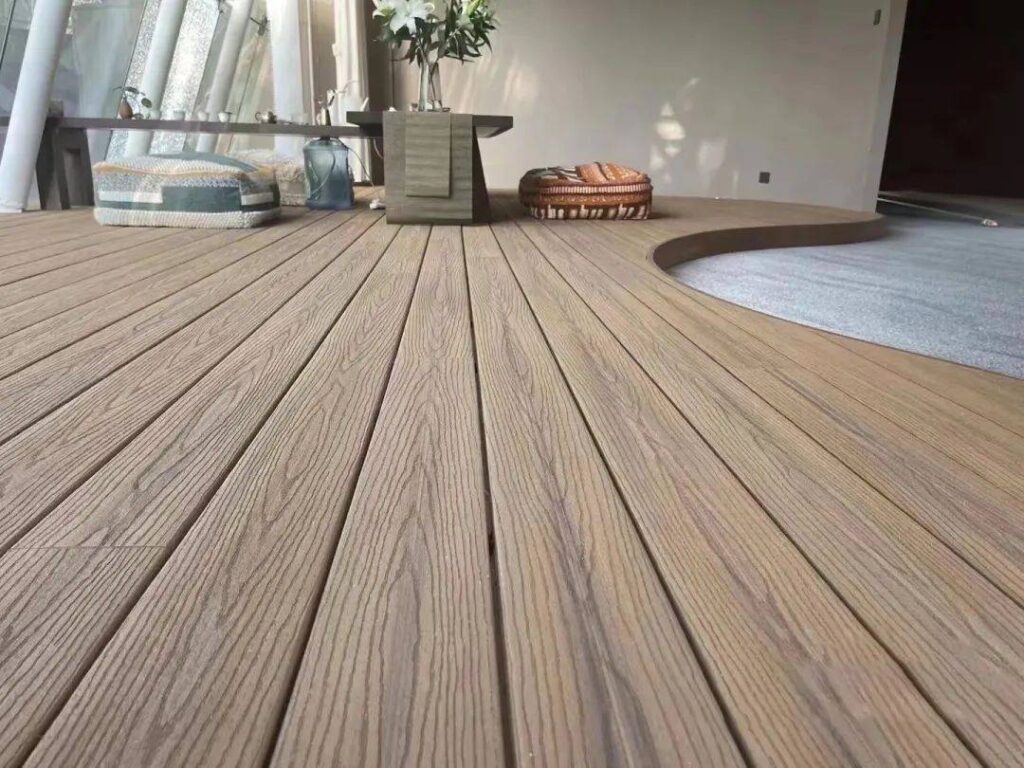Diversified Indoor and Outdoor Decoration of Plastic Wood Composite Panels
Wood-plastic composite materials have homogeneous materials, are more stable in size than wood, are less prone to cracks, and have no defects such as wood knots or twills; they have the processability of thermoplastic plastics and can be used for molding through extrusion, injection molding and other processes, and have little equipment wear. ;Products can be pressed into tongue-and-groove shapes, three-dimensional patterns and other required openings, without the need for complex secondary processing;Various colorful products can be made by adding colorants, painting or laminating processes;It is light in weight and consumes little energy for production; it is easy to process and can be sawed, planed and bonded, or fixed with nails and bolts. It can be completed using woodworking tools, and its nail-holding strength is significantly better than other synthetic materials;It does not need to be treated with toxic chemicals and does not contain formaldehyde; it has the appearance of wood and is harder than plastic products; it can be reused and recycled after being discarded, and it is biodegradable, which is beneficial to environmental protection and many other advantages.

However, there are also some obvious shortcomings, such as high density, high price, and inability to absorb toxic and harmful gases. Therefore, its use is mostly limited to outdoor use, but it has not been fully used in indoor decoration. Paradoxically, with the rapid development of my country's economy, the demand for interior decoration materials is becoming increasingly strong. Therefore, it is very necessary to modify traditional wood-plastic composite materials to meet the needs of interior decoration. The development of high-performance wood-plastic composite panels has very practical value.

The key to structuring, functionalizing and upgrading wood-plastic composites is to strengthen the research on the interaction between wood powder and plastic;Comprehensive use of modern research methods to systematically study the composite laws between fiber resins, such as interphase chemical bonds, interphase tissue morphology, interfacial acid-base reactions, surface wetting and other phenomena, can enable the early establishment and improvement of the blending composite theory of wood powder filling. In addition, due to the use of larger amounts of additives to improve processing performance and product durability, formulas have become more and more complex, and research on avoiding side effects between additives is of great significance. In short, high-performance wood-plastic composite material is an environmentally friendly material with promising prospects, and its processing technology will become increasingly mature and diversified.
